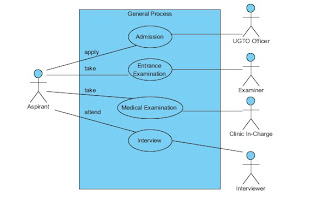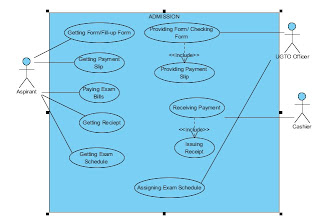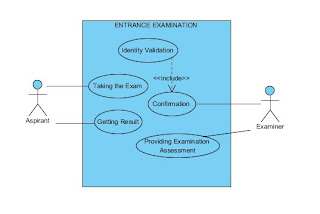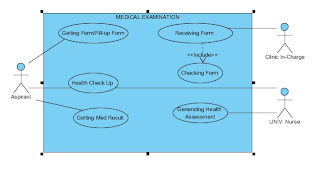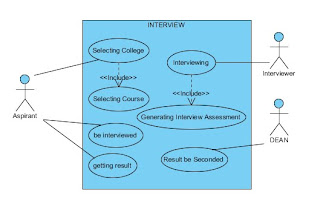Defining the Deployment Environment
Analysts consider the configuration of computer equipment, operating systems, and networks that will exist when the new application system is deployed.
Application architecture designs exist as models, documents, and scenarios. However, applications must be deployed into a physical environment where infrastructure limitations may negate some of the architectural decisions. Therefore, you must consider the proposed deployment scenario and the infrastructure as part of your application design process.
It is needed to describe the options available for deployment of different types of applications, including distributed and non-distributed styles, ways to scale the hardware, and the patterns that describe performance, reliability, and security issues. By considering the possible deployment scenarios for your application as part of the design process, you prevent a situation where the application cannot be successfully deployed, or fails to perform to its design requirements because of technical infrastructure limitations.
Once you define systems, you must specify information about the deployment environment, including the database, match engine, and standardization engine vendors.
In choosing or defining deployment environment you must:
1.Identify the deployment pattern or strategy used.
Deployment Strategy
The target deployment environment for an application may already be rigidly defined, and so the application design must reflect the restrictions. Sometimes design tradeoffs are required; for example, because of protocol or port restrictions, or specific deployment topologies. Identify constraints early in the design phase to avoid surprises later, and involve members of the network and infrastructure teams to help with this process. General recommendations are:
Know your target physical deployment environment early, from the planning stage of the lifecycle.
Clearly communicate the environmental constraints that drive software design and architecture decisions.
Clearly communicate the software design decisions that require certain infrastructure attributes.
Non-Distributed Deployment
A non-distributed deployment is where all of the functionality and layers reside on a single server except for data storage functionality.
This approach has the advantage of simplicity and minimizes the number of physical servers required. It also minimizes the performance impact inherent when communication between layers has to cross physical boundaries between servers or server clusters.
A non-distributed deployment does have some disadvantages:
The processing requirements of the layers differ. For example, the presentation layer must cope with multiple concurrent users and short bursts of activity, while the business and data layers should be optimized to deal with a steady stream of requests from a limited number of callers. Processing on one layer could absorb sufficient resources to slow the processing in other layers.
The security requirements of the presentation layer may differ from those of the business and data layers. For example, the presentation layer will not store sensitive data, while this may be stored in the business and data layers.
It is difficult to share business logic between applications.
Distributed Deployment
A distributed deployment is where the layers of the application reside on separate physical tiers. Distributed deployment allows you to separate the layers of an application on different physical tiers as shown in the following figure.
This approach allows you to configure the application servers that host the various layers to best meet the requirements of each layer. Distributed deployment also allows you to apply more stringent security to the application servers; for example, by adding a firewall between the Web server and the applications servers and by using different authentication and authorization options.
In rich client applications, the client may use Web services exposed through a Web server, or may access functionality in the application server tier using DCOM or Windows Communication Foundation (WCF) services.
Distributed deployment provides a more flexible environment where you can more easily scale out or scale up each physical tier as performance limitations arise, and when processing demands increase.
Performance and Design Considerations for Distributed Environments
Distributing components across physical tiers reduces performance due to the cost of remote calls across server boundaries. However, distributed components can improve scalability opportunities, improve manageability, and reduce costs over time.
Consider the following guidelines when designing an application that will run on a physically distributed infrastructure:
Choose communication paths and protocols between tiers to ensure that components can securely interact with minimum performance degradation.
Use services and operating system features such as distributed transaction support and authentication that can simplify your design and improve interoperability.
Reduce the complexity of your component interfaces. Highly granular interfaces ("chatty" interfaces) that require many calls to perform a task work best when on the same physical machine. Interfaces that make only one call to accomplish each task ("chunky" interfaces) provide the best performance when the components are distributed across separate physical machines.
Consider separating long-running critical processes from other processes that might fail by using a separate physical cluster.
Determine your failover strategy. For example, Web servers typically provide plenty of memory and processing power, but may not have robust storage capabilities (such as RAID mirroring) that can be replaced rapidly in the event of a hardware failure.
Take advantage of asynchronous calls, one-way calls, or message queuing to minimize blocking when making calls across physical boundaries.
How best to plan for the addition of extra servers or resources that will increase performance and availability.
Recommendations for locating components within a distributed deployment
Consider the following guidelines when determining where to locate components in a distributed environment:
Only distribute components where necessary. Common reasons for implementing distributed deployment include security policies, physical constraints, shared business logic, and scalability.
In Web applications, deploy business components that are used synchronously by user interfaces or user process components in the same physical tier as the user interface to maximize performance and ease operational management.
Don’t place UI and business components on the same tier if there are security implications that require a trust boundary between them. For instance you may wish to separate business and UI components in a rich client application by placing UI on the client and business components on the server.
Deploy service agent components on the same tier as the code that calls the components, unless there are security implications that require a trust boundary between them.
Deploy asynchronous business components, workflow components, and business services on a separate physical tier where possible.
Deploy business entities on the same physical tier as the code that uses them.
2. Consider Design Implications and Tradeoffs Up Front
You need to consider aspects of scalability that may vary by application layer, tier, or type of data. Know your tradeoffs up front and know where you have flexibility and where you do not. Scaling up and then out with Web or application servers may not be the best approach. For example, although you can have an 8-processor server in this role, economics would probably drive you to a set of smaller servers instead of a few big ones. On the other hand, scaling up and then out may be the right approach for your database servers, depending on the role of the data and how the data is used. Apart from technical and performance considerations, you also need to take into account operational and management implications and related total cost of ownership costs.
3. Examine Stateless Components
If you have stateless components (for example, a Web front end with no in-process state and no stateful business components), this aspect of your design supports scaling up and out. Typically, you optimize the price and performance within the boundaries of the other constraints you may have. For example, 2-processor Web or application servers may be optimal when you evaluate price and performance compared with 4-processor servers; that is, four 2-processor servers may be better than two 4-processor servers. You also need to consider other constraints, such as the maximum number of servers you can have behind a particular load-balancing infrastructure. In general, there are no design tradeoffs if you adhere to a stateless design. You optimize price, performance, and manageability.
4. Know the type of Data
For data, decisions largely depend on the type of data:
Static, reference, and read-only data. For this type of data, you can easily have many replicas in the right places if this helps your performance and scalability. This has minimal impact on design and can be largely driven by optimization considerations. Consolidating several logically separate and independent databases on one database server may or may not be appropriate even if you can do it in terms of capacity. Spreading replicas closer to the consumers of that data may be an equally valid approach. However, be aware that whenever you replicate, you will have a loosely synchronized system.
Dynamic (often transient) data that is easily partitioned. This is data that is relevant to a particular user or session (and if subsequent requests can come to different Web or application servers, they all need to access it), but the data for user A is not related in any way to the data for user B. For example, shopping carts and session state both fall into this category. This data is slightly more complicated to handle than static, read-only data, but you can still optimize and distribute quite easily. This is because this type of data can be partitioned. There are no dependencies between the groups, down to the individual user level. The important aspect of this data is that you do not query it across partitions. For example, you ask for the contents of user A's shopping cart but do not ask to show all carts that contain a particular item.
Core data. This type of data is well maintained and protected. This is the main case where the "scale up, then out" approach usually applies. Generally, you do not want to hold this type of data in many places due to the complexity of keeping it synchronized. This is the classic case in which you would typically want to scale up as far as you can (ideally, remaining a single logical instance, with proper clustering), and only when this is not enough, consider partitioning and distribution scale-out. Advances in database technology (such as distributed partitioned views) have made partitioning much easier, although you should do so only if you need to. This is rarely because the database is too big, but more often it is driven by other considerations such as who owns the data, geographic distribution, proximity to the consumers and availability.
5. Consider Database Partitioning at Design Time
If your application uses a very large database and you anticipate an I/O bottleneck, ensure that you design for database partitioning up front. Moving to a partitioned database later usually results in a significant amount of costly rework and often a complete database redesign.
Partitioning provides several benefits:
The ability to restrict queries to a single partition, thereby limiting the resource usage to only a fraction of the data.
The ability to engage multiple partitions, thereby getting more parallelism and superior performance because you can have more disks working to retrieve your data.
Be aware that in some situations, multiple partitions may not be appropriate and could have a negative impact. For example, some operations that use multiple disks could be performed more efficiently with concentrated data. So, when you partition, consider the benefits together with alternate approaches.
6. Network Infrastructure Security Considerations
Make sure you understand the network structure provided by your target environment, and understand the baseline security requirements of the network in terms of filtering rules, port restrictions, supported protocols, and so on. Recommendations for maximizing network security include:
Identify how firewalls and firewall policies are likely to affect your application's design and deployment. Firewalls should be used to separate the Internet-facing applications from the internal network, and to protect the database servers. These can limit the available communication ports and, therefore, authentication options from the Web server to remote application and database servers. For example, Windows authentication requires additional ports.
Consider what protocols, ports, and services are allowed to access internal resources from the Web servers in the perimeter network or from rich client applications. Identify the protocols and ports that the application design requires and analyze the potential threats that occur from opening new ports or using new protocols.
Communicate and record any assumptions made about network and application layer security, and what security functions each component will handle. This prevents security controls from being missed when both development and network teams assume that the other team is addressing the issue.
Pay attention to the security defenses that your application relies upon the network to provide, and ensure that these defenses are in place.
Consider the implications of a change in network configuration, and how this will affect security.
7. Manageability Considerations
The choices you make when deploying an application affect the capabilities for managing and monitoring the application. You should take into account the following recommendations:
Deploy components of the application that are used by multiple consumers in a single central location to avoid duplication.
Ensure that data is stored in a location where backup and restore facilities can access it.
Components that rely on existing software or hardware (such as a proprietary network that can only be established from a particular computer) must be physically located on the same computer.
Some libraries and adaptors cannot be deployed freely without incurring extra cost, or may be charged on a per-CPU basis, and therefore you should centralized these features.
Groups within an organization may own a particular service, component, or application that they need to manage locally.
Monitoring tools such as System Center Operations Manager require access to physical machines to obtain management information, and this may impact deployment options.
The use of management and monitoring technologies such as Windows Management Instrumentation (WMI) may impact deployment options.
Sources:
http://www.codeplex.com/wikipage?ProjectName=AppArchGuide&title=Chapter+5+-+Deployment+Patterns&referringTitle=Homehttp://apparchguide.codeplex.com/wikipage?title=Chapter%205%20-%20Deployment%20Patternshttp://developers.sun.com/docs/javacaps/designing/jcapsdevsmidxm.dsgn_eview-deployment_t.html
